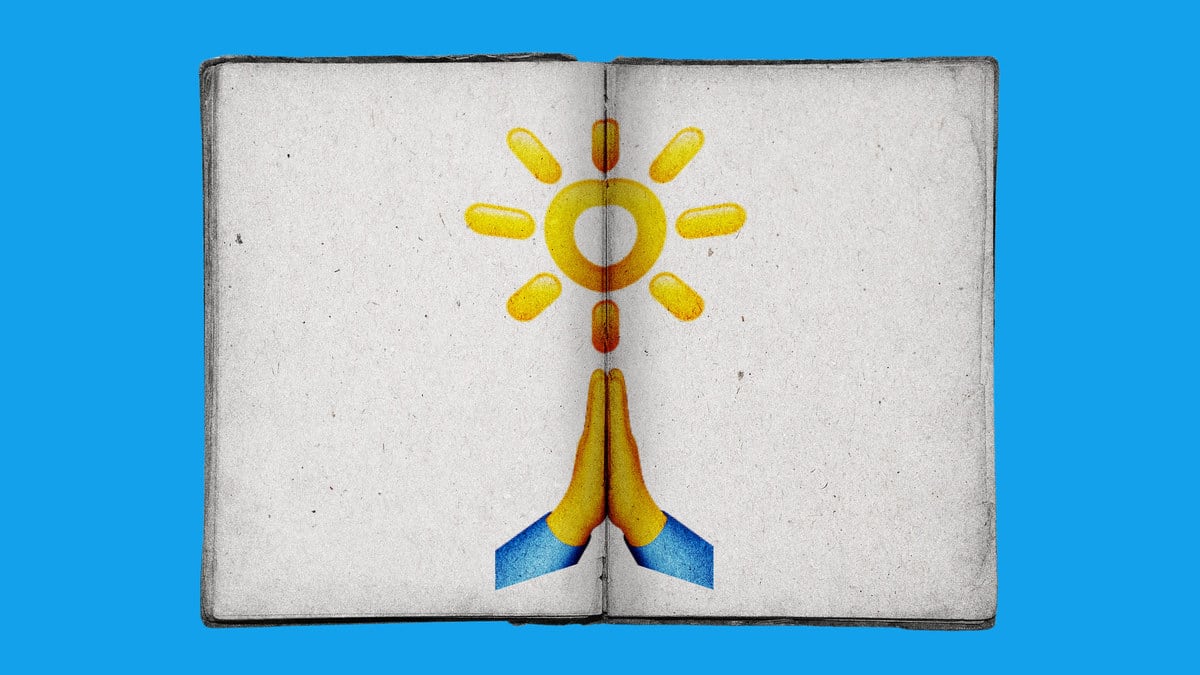The crucifixion was a difficult thing for followers of Jesus to wrap their heads around. How could the Messiah die such a humiliating death? According to the New Testament, in the waning moments of his life, Jesus cries out, “My God, My God why have you forsaken me?” In the Gospel of Mark these are Jesus’ final words. This cry of desolation, as it is known, is painful to read and theologically difficult to manage. But one important ancient copy of Mark has a different take entirely: in the oldest surviving Latin gospel Jesus seems to call out to the sun-god Helios instead.
The book in question, Codex Bobiensis, currently lives at the Turin National Library. It’s easy to overlook; the swarms of religious pilgrims who flood Turin each year prefer to visit the city’s considerably more famous Shroud instead. It’s one of thousands of texts of the New Testament—all of which differ from one another in small and significant ways—that scholars use to try to chart the history of the text of the New Testament.
Though some manuscripts are ornate or difficult to read, Bobiensis is refreshingly clear; the letters are even and, in as much as it is easy for anyone to read ancient manuscripts, it is comparably straightforward to follow. This late fourth or early fifth century book (or ‘codex’ as scholars call it) had come to Italy from North Africa by mistake, when Irish monks mistakenly associated it with the missionary St. Columba and placed it in a monastery in Bobbio. Though the book itself is incomplete and preserves only portions of Matthew and Mark, there’s enough material in it that scholars can draw some conclusions about its age and contents. Some date the version of the gospels in the book as early as the third century and connect it to the Bible used by Cyprian, a famous mid-third century Carthaginian bishop and martyr. Given that there are no first century manuscripts of the New Testament and there are only a few fragments that have survived from the second, it’s a very important text and earlier than the majority of Greek manuscripts.
Despite its ties to what someone who might figuratively be called an early Christian celebrity, most people and even most New Testament scholars don’t know much about this early Christian text. This is in part because it’s in Latin rather than Greek, but also because Bobiensis has some very peculiar, even shocking, features. In the portions of the gospels that have been preserved, sections of the story are missing. In some places the manuscript uses non-standard abbreviations for the sacred names of ‘God,’ ‘Lord,’ and ‘Jesus.’ Where Christian manuscripts would normally have IHS (derived from the Greek for Jesus) this manuscript has it spelled differently. There is even a mistake in the Lord’s Prayer (more on that later). But the most striking and, you might say, theologically troubling places are those instances in the life of Jesus where the copyist has substituted the name of pagan deities “Helion” (god of the sun) and Jove (Zeus) instead of the words for “Eloi” (the Aramaic for “my God”) and “sheep.” Many scribes make mistakes when transcribing and copying texts—our best guess for professional copyists is about one per page—but these kinds of errors are difficult to explain.
What kind of Christian doesn’t know the Lord’s Prayer? A non-Christian, or at least that’s the conclusion to which many scholars have come in the past. No Christian or Christian-employed slave copyist would have erratically omitted parts of the Jesus story. The book must have come from a different kind of source, most likely a late fourth-century North African bookshop. But book manufacturing, like any kind of luxury goods industry, was an expensive business. Parchment was costly and literary slaves were expensive. It’s easy to imagine how a pragmatic bookseller, who was painfully aware of his bottom line, instructed his copyist, who was clearly no Christian either, to leave certain portions out. The less parchment that was used in the production of this book, the greater the bookseller’s margins and potential profit would be.
But now scholar Matthew Larsen, of Princeton University and the author of Gospels Before the Book, has another explanation for Bobiensis’ peculiarity. Larsen told the Daily Beast that in a fourth or fifth century North African context, Jesus’ address to Helios isn’t as strange as it at first seems. During a visit to a late fourth century baptistery last October, Larsen “saw that in the very place where people would have stood while being baptized, there was not a quotation from scripture but a clear allusion to Virgilian poetry.” You can imagine, argues Larsen, “a community [like this one] using this type of gospel, with its strange readings about Helios and Jove.”
As early as the second century, added Larsen “we have evidence of Christians thinking about Jesus’ death and resurrection in association with the setting and rising of the sun, and in the third and fourth century we see a blending of imagery of Christ and Sol Invictus.” The person who made Bobiensis would not have been alone in incorporating sun-god imagery into Christianity, he would just be the first to integrate that idea into scripture itself. Of course, for modern Christians, the idea that Jesus (or any early Christians) believed in and spoke to Helios is deeply problematic. It’s one thing to say that Christians utilized pagan iconography in their artistic depictions of Jesus (which they did), but the idea that Jesus called out to Helios in his dying breath is considerably more challenging. Did Jesus believe in Helios? Almost certainly not, but it might be the case that some ancient Christians did and transposed their beliefs onto him.
Brent Nongbri, a professor at the Norwegian School of Theology, said that some differences in Bobiensis are just accidents, “But in other cases, it's pretty certain that either the copyist of Bobiensis or one of its ancestor manuscripts intentionally changed the text to clarify its meaning.” For instance, later in the Lord's Prayer (Matthew 6:13), the copyist of Bobiensis writes “Don't allow us to be led into temptation" rather than the standard “Lead us not into temptation.” Interestingly, this is the same kind of clarification about the origins of temptation that Pope Francis tried to implement last year. Nongbri told me, “Maybe someone was thinking along the same lines as Pope Francis and absolving God of the act of leading humans into temptation.”
Larsen pointed out that while diverging versions of the Lord’s Prayer seem almost blasphemous to us today, there were at least three other versions of the Lord’s Prayer used in the ancient world, so perhaps this version is not so strange. This manuscript is evidence of the diversity of thought and practice among early Christians. Larsen likened it to modern sports rituals: “Maybe the state of the Lord’s Prayer in Late Antiquity was a bit more like when my football team used to say the Lord’s Prayer together before a game and at two or three lines of the prayer the team would break unison and diverge into different versions of the prayer practiced by the communities we had all come from.” If that’s the case, then Pope Francis should be delighted to have an important early manuscript on his side.






